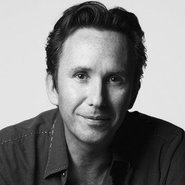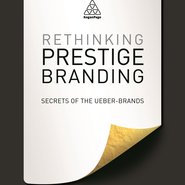By Wolfgang Schaefer and JP Kuehlwein
What makes someone covet a Kelly bag? What does Mini’s approach to marketing have in common with Nespresso’s? Uncovering the secrets of why and how these Ueber-Brands are created more equal than others is the focus of Rethinking Prestige Branding. Here is a book excerpt:
Part 2: Seven Secrets of Ueber-Brands
Ueber-Brand case study 3: Aesop: Un-selling beauty
Aesop, an Australian beauty brand in the process of conquering the
world, was created by Dennis Paphitis in 1987. The son of a family of
barbers who had emigrated from Greece, he followed in the tradition.
His Melbourne salon quickly gained a reputation for high craft and service
and for using essential oils that made it a pleasantly fragrant place, rather than the usual ammonia smell from coloring. Passionate about the idea of nurturing beauty as naturally but efficaciously as possible, Paphitis and his business partner Suzanne Santos stepped out of the salon business in 1996. They went on to create a ‘cerebral beauty brand’ that seeks to appeal as much to the intellect as to the desire to live and look healthy. The brand opened its first store by building-out a parking garage ramp in a Melbourne hotel in 2002 and went international in 2006, starting in Paris. By 2012 some 60 stores around the world were generating most of their estimated AUS $64 million in sales. This is when Brazilian beauty company Natura bought a majority stake in Aesop, promising to support its global expansion but also protect the brand’s independence.
Fabulist un-selling
‘Spectacular Performance, Minus The Drama’ is written on a card featuring a stunning black and white photo by Ruven Afanador showing two fierce-looking flamenco dancers entangled by their hair. On the back of the card Aesop’s hair care line is introduced in a matter-of-fact way. This artistic yet determined piece of communication is representative of the ways in which Aesop breaks with beauty marketing conventions. There are no pseudo-scientific product demonstrations or celebrity endorsements, no mass-media ads or (e-)mail blasts. And despite its heavy use of natural ingredients, the oft-claimed ‘organic’ is missing. There is no serial-launching of ‘new and improved’ products, either. Rather, social media like Pinterest show the beautiful store interior and quote Paphitis on there being ‘an obscene amount of choice and variety for the sheer sake of it [...] Luxury is less but better, substantial over fleeting, meaningful over mindless’ (Farrow, 2013).
 Wolfgang Schaefer is chief strategy officer of SelectNY
Wolfgang Schaefer is chief strategy officer of SelectNY
So where and how does the brand approach consumers and spread the gospel? It meets them where they go and looks to become one of their places of congregation. If you are part of the sophisticated jet set, chances are you will find Aesop’s soap and moisturizer set placed in the bathroom of ‘in’ spots you have on your bucket list, for instance 28 à Aix-en-Provence winery in France, the Yarra Valley, Australia, Kapok boutique in Wan Chai, Hong Kong, Claska gallery and hotel in Tokyo and Die Bruecke restaurant in Hamburg. This halos the equity as much as it reaches the target.
It might also have been the beautiful interior of an Aesop shop that caught your eye while strolling through that hip neighborhood. The seductive product will be dispensed outside, but not as sales pitch, more as silent benefit offer and invitation to come in. Inside, the staff are guided to talk about factors like the climate, pollutants, the diet as well as their personality to aid correct product selection. As Matteo Martignoni, General Manager Marketing, told us:
From the beginning this brand decided that nobody should be ‘sold-to’, which means pushing products to customers and promising them those products will do whatever they wish for. That is disingenuous.
So why not talk about a book, play or museum that might further your spiritual beauty as well? The objective is to engage intellectually. Being introduced to the products via this personal and holistic approach is so important to the brand, that the Aesop Web site recommends a visit to a store rather than a first order online.
Aesop is very selective in its digital strategy anyway. It uses the Web to project its Ueber-Serious core: ‘The Fabulist’ is a brainy ‘monthly literary digest’ through which Aesop publishes original essays and interviews that would seamlessly fit The New Yorker. The brand also tweets ‘since we love writing, and synthesizing important thoughts in two lines represents an exciting intellectual challenge’ Martignoni tells us. But these tweets are rather ‘heavy stuff’ compared to the usually light-hearted chatter by beauty brands and see few re-tweets. Pinterest posts highlighting Aesop’s stunning aesthetics, on the other hand, radiate the allure further than the stores alone could ... and are more easily digested.
Why this rather restrained, one-way use of the Internet? Why no Facebook page with fan-fed stories or syndicated content on the Web site? As an intellectual Ueber-Brand, Aesop wants to contribute original thought rather than simply borrowing attention. As CEO Michael O’Keeffe put it to Jo Bowman at CNBC magazine: ‘We see ourselves as leaders rather than followers. We’re not reading the latest Wallpaper* looking for the next cool cafe to partner with’ (Bowman, 2010). And that’s why Aesop is respected by the global avant-garde and gets their help in ‘Un-selling’.
Principle 3: Un-selling 107
Mission and myth of a sage
Aesop strives to be an ‘honest and thoughtful beauty brand that acknowledges your intelligence and sophistication,’ says Martignoni. Promising eternal youth or to change the world are anathema. Instead, there is a quiet confidence to own the moral high ground and to win over consumers with a humble but efficacious offering. Beyond the product, the mission is to inspire and be inspired by intelligent people. Their Web site declares:
 JP Kuehlwein is executive vice president at Frederic Fekkai
JP Kuehlwein is executive vice president at Frederic Fekkai
Aesop values all human endeavors undertaken with intellectual rigor, vision and a nod to the whimsical. We advocate the use of our products as part of a balanced life that includes a healthy diet, sensible exercise, a moderate intake of red wine and a regular dose of stimulating literature. (Aesop.com)
And there are, indeed, Aesop chocolates and wine in the stores. Not to be sold but rather to be consumed there, fueling conversation and passing on the word to like-minded friends: ‘Don’t compromise yourself; you’re all you’ve got’ reads a Janis Joplin quote on an Aesop sample.
The myth of this brand starts with its name (Nomen est omen!). Aesop was a Greek slave turned teller of fables, it is not entirely clear why his was chosen as brand name. Some attribute it to Paphitis’ Greek background while others relate it to the fact that he is a bookworm and avid student of philosophy. Martignoni says that the deep moral lessons conveyed by Aesop provided a moral compass for what was to be a commercial entity. As one follows the brand’s history, a myth emerges of a sage (Paphitis) trapped in the body of an entrepreneur who despises the shallowness and mendacity of the industry he finds himself in and sets out to create a brand that attracts the people of thought and sophistication he admires. ‘I guess the reason I started my own beauty company was that I wasn’t patient enough to be a philosopher, nor tolerant enough to be an architect’, the founder told Bethan Cole of the Independent newspaper (Cole, 2008).
But one does not need to study the founder’s interviews. Just look at the hand wash, which comes with a quote by Carl Jung: ‘Often hands will solve a mystery that the intellect has struggled with in vain’. Doesn’t that say all about beautiful minds and faces? And don’t such high-reaching hands deserve to be pampered with a potion of ‘Resurrection Aromatique’ – at U.S. $30?
Intelligent beauty to behold! ... and long for
If many high-end beauty brands feel like shiny temples then Aesop is a monastic library. Aesop’s aesthetic follows a strict, unassuming, functional code on the outside but reveals rich, elegant detail once you take a closer look, step inside or open the bottle.
The circa 100 different Aesop products are packed into quasi-identical brown bottles or squeezable beige metal tubes, to be mindful and focused. Identical containers and dyes are economical, printing all product information on the container makes cartons or leaflets unnecessary, the brown tint or metal protect the content against UV damage and help to minimize the use of preservatives. Also ‘the cream and brown label’ is meant to blend into the bathroom. ‘We do not want to stick out’ says Martignoni. ‘More with less’ par excellence.
The same goes for the actual products. It is hard to believe that an ‘antioxidant mix of parsley and blackcurrant seed oil, enhanced by orange or violet petal’ would be guided strictly by what is efficacious only. It just sounds and smells far too beautiful. Yet that’s what seems to be the case.
But, then there are also the subtle, philosophic rather than functional details. The ‘macron’ set over the ‘e’ adding an elegant, capricious note to the logo and a little mystery around the pronunciation. Long rows of identical bottles in uneven numbers giving beautiful rhythm and symmetry. The simple brown paper bags (plastic is a waste and too glossy) with cultural tips printed on them. And the stores having water basins where customers are encouraged to try the indulgent products – which of course doesn’t just make for great ritual but also infuses the room with incense-like aromas.
The branding expert Mark Tungate would probably call these stores ‘big dog whistles’ as they might go unnoticed by many shoppers but are ‘compelling to those on the right wavelength’ (Tungate, 2011). And indeed, to be treated to that Aesop wine and chocolate mentioned earlier can be experienced as a form of ritualized ascendance to a ‘beauty poet society’, the inner circle of intellectual sophisticates who associate with the brand. At least it felt that way at a party in their Sheung Wan store, Hong Kong. The talk was of slow food, urban cycling or low-fi electronics. Most people were visibly enjoying each other yet business was brisk, one buyer explaining that he was stocking up ‘to help the store succeed... happy to have one in his neighborhood’.
Aesop prides itself on these close relationships with their neighborhoods – physical and spiritual. Bonding with a worthwhile customer segment, a modern, moneyed, intellectual ‘cultural cohort’, as Douglas Holt would describe them, seeking sophisticated yet unpretentious products to distinguish themselves from the nouveau riche with their showy brands. To them, Aesop is cult and they are willing disciples of what Paphitis calls ‘a small movement that’s best described as the Muji-Hermès paradigm’ (Flaherty, 2012). Especially since, typical of an Uber-Brand with a myth that ‘reaches beyond’ to a higher, more educated and spiritual level, the meticulously staged brand and its idiosyncratic world can be quite intimidating to the uninitiated. Who of the hoi polloi would appreciate a surreal beauty meditation film with a Salvador Pániker quote: ‘Better than a face-lift, to stay young we need to be permanently in a state of intellectual curiosity’. Which is exactly what you can find at any Aesop store at any moment.
Living the dream and moving with gravitas
Obviously, the brand has chosen to make the stores its principal manifestation. ‘The first one was some six years in the making, but it was so well thought through, we still execute them in the same spirit,’ according to Martignoni. Unassuming from afar and just marked by the simple logo, they become stunning experiences in modernist design on the inside. Tellingly, a search for ‘Aesop brand’ on Google yields mostly pictures of the sculptural interiors created in collaboration with cutting-edge architects like Ciguë, Torafu or Weiss-heiten. One can admire 7,560 amber glass bottles used as a ceiling of the Adelaide store or thousands of reclaimed copies of the New York Times stacked up to serve as product pedestals at New York’s Grand Central Station, and other artistry-cum-ideology statements. Regularly, Aesop will transform their spaces into culture centers where products are replaced by works of authors (Gabriel García Márquez) or designers (Jo Meesters), installation artists (Frida Escobedo, Hiroko Shiratori) or ceramic sculptors (Ray Chan). Or Aesop moves right in with the artists as it has done at the Invisible Dog Art Center in Brooklyn, New York.
Apart from carefully selecting its customer, this exacting, high-brow attitude also attracts a special type of employee – art students, freelance writers and designers. ‘It keeps the noise down, lets us talk intelligently and do the right things, just like at the headquarters’ says Martignoni. Those headquarters are ruled by a triumvirate of Paphitis the Artist, Santos the Alchemist and O’Keeffe the Operator. Fastidious perfectionism and a tight control of all elements of branding are evident in the organization and operations. Rumors that all Aesop researchers wear the same apothecary coats, use the same type of black BIC pen, that charts are colored in Aesop cream and that even the toilet paper is chosen by the boss are not being denied. There are the obligatory quotes, stark wooden desks and identical black books lining the room and walls. Martignoni confirms that eating at the desk is not allowed. Instead, employees are encouraged to cook together and visit the library for breaks. On birthdays the company gifts books from the favorite list.
All this might appear a bit 1984 and the brand has its detractors, but the resulting ‘intellectual energy’ (from an Aesop job posting) gives the brand a spirit and level of authenticity which makes it hard for others to copy: ‘Great spirits have always encountered violent opposition from mediocre minds (Albert Einstein)’ – a quote on walls of Aesop headquarters in Melbourne, Australia.
When it comes to business expansion, Aesop is also the perfect Uber-Brand, following its namesake fabulist who lets the tortoise win over the hare. In the hotbed market of Asia, for example, Aesop refuses to join everyone else in launching a whitening product because it sees the ‘negative cultural and personal ramifications’. And so far, the brand has not set foot on China’s mainland because the state requires testing on animals, as O’Keefe told Kathy Chu of WSJ Live (Chu, 2013). Even in sampling the brand follows its own tact: Aesop amenities would be in high demand by boutique hotels all over the world, if the brand was willing to have them contract-made at a much cheaper cost, like everyone else.
Of course, part of this comparatively slow speed of expansion is the fact all stores are hand-picked and designed by the small management team – with a store on Paris’s Rive Gauche appropriately bourgeois in design and its sibling in the Marais reflecting the bohemian flair of that neighborhood. Consequently, Aesop’s 100-odd stores opened since 2002 pale in comparison to the hundreds opened by competitor Kiehl’s during the same time (including department store counters). And Kiehl’s is already choosy, as we will see in Principle 6. In the end, though, it’s not logistical limitations, it’s strategic intent and cunning that let the brand grow ‘organically’, at its own pace and in synch with its neighborhoods and clientele. This way the expansion – even within a same city is never experienced as inflation and the brand’s Uber-Power is kept up.
The challenge will of course be to maintain this restraint after the acquisition by Natura. But Martignoni seems confident: the investor was chosen ‘based on matching philosophies. Not the money’.
Wolfgang Schaefer is chief strategy officer of SelectNY. JP Kuehlwein is executive vice president at Frederic Fekkai.
Excerpted from “Rethinking Prestige Branding: Secrets of the Ueber-Brands” (Kogan Page, 2015). Reprinted with permission.
{"ct":"G9bBMNCF8Llnw3ZminGXyfthQGU4OHuyqRpOMLDVfzSAL2k6t2fFZ1VFj\/mhqCgMZyiB\/1VWGNGCh4RFaQfNyecYUpGEduwfdM0Zbs3SGUAAVBjIzri7rShYOI5i8F78xnR0JFCiSB1fq6AacU08Fycrg74R9foWvx76GxWYTEZoBaZqsEpqwlD5QRoCtSYkeNPQRKXEX\/5sfCAcDRZlFYOMjSw8S3hw09qon\/jB1vW6DwewQD11Z8rLzqyZ3fUJoeQCB0niyB\/Nm1SBJxQ4T+d+3LCgSPdUaifjIfjkCg+lBbnLdxUemGUcrxqNzaxjjmYO1MSC0QW7WLXUbm9L9srMf3qCmBn8ZWC54QreH52RBpNl1m5waY6+7O\/QlU1fwOHkQ\/Mw\/hzxtcbvLQJLPiWUZxo2rR8qkdSJBpy860v0uMPX\/gVQOZc6fn8UYqU4rzb+8flaVv2yMHHh6VtIJfPE8t3XEdfJS7+wbfe9WKr5ggwr5pajom3raeBhcnf+VHCENCEbSkLKWtFwuCnfjOJqzDSVwIbxXt+l9yTKkuMqmJVq7C20UweN\/hYzy\/1NpDCODeRIKHVCHqK45ShQV8EXfZVrC+wkhfE57fddTRyrEyKWia0TTRgg4PM5NZo3XBHLfpjSN7BP2J8LRknrIEJSUhNkdPkdrfFTozvys76TechqtuJ6gJQ2spRLr3Xi3eoDKmHP7VkHmpBuqlqRg0\/UNdKJAQ53\/6kDuOcZTw\/bj5uhDgqWo0qv5clED1siV5uA9qdYBYtf\/9CQ7XlTj+FQPt\/0q3hwnrfeIjsQSoGV8F3hccymcALRVYR8bX6+lTT5yO730ipm8HJMFcmWH7118Eb6aBWfs7Pyol\/sjExLWOIl8lMBpTKL+8T4OUZqVztB4\/MGMFVC43zJr3OqaCmfjsjPokwesu8R6ZE70gljhF7\/E+owyKLWq93c3q9yjHjIJBT+OEc82LvYjov5yZDDBUay+X0g8PI5QgsPPbfclU+HRzwv+Ip\/4XOAMRWQdQYSE9n8fF0lvVLIAc9+2WPTCCzm50vOvf5QKWskY3a2uOTHx3+YpqnmZlv9K+vydBg76Xm0a4dzc3CCFwFfPET5FmZPaF4+7IudA3EUCWv1s+KQLOKxL+qMYgFzsTd4c9OcKCyljT2Xi5Fet8KtMA7ANgcU8y2Jxzw8MjUKIlLMm9Pp3eTgVFcKnKVq2DcudGPVW6rWZadTrIDoMstj703g6jd652s6+\/x4DO0BIfEPujP99fn1zX+P\/CtvzFD8MfczoaRWWbE5q8xPfgfXwWgsXsCi\/5i6u\/E0QLWWQH3kIaYsQ4Zg0e+12jP2W+2o6e2orte+zX9Z75x63j7HDEcxKS4gyieK0B7oJC1EABBLJJkEH5JyBi0sjh3ZxVecWReUGjvbJ2jccOOItWa2cD2LY6YfMhf57HVgPT6lulBCg\/lp0HwcE4MpQzkczoTvlhEfLyPOOXWDEFTx8YsfelYILXEMbLX1fk8wZG7ilc2KnGrhHAlmf9QT8KihsYUWCy2FZkoBprA6dIYx+imm8qdn5xEBfEzrXrO8I+kqmxjeaLJR3sgQ76+VXG7FmiwD1lWJumQgTmm\/g6kt9cKPwFNoiq6ul0h6zK8CsxuYyEAhbN0+PxsTwh2\/pxQf+ylUt48GGZeuhkSb5EjYl4BvTb2liMlFTQMfoyS7duWbjPzu1D1\/eDlzmMRl9LcnXCl6arIWhHLFFyLUK0jxVOsh2ti3+h9CCV801SzS6LG96XNMQQOou4x64SqVAu98SvY3bgmglfS38SUS9r4dVJZj0drwyoc5doEUJOlCsuvnV8CBnSyWxRex91+jzjQcbjtMN5A1XpC6M0HP6QwJP90q5Tw1fxgn5MKbaQYuv5bvTlPtFrENNKfdYCW238IN+8xiHk+4tqThmY3n+MR16f2CgRRgR5q4JrwUQqQ4\/P2r58y2ugupBuYeQUgtcDsaWzTDj0AAyNqhtP3s\/IBmiKcsPqNw9Oh+C6Xys6DKFiZZVVvGRWkIFvfvOh81zovnbEk5gn4g6s5Uuxjb64pbbB1cpqbppACh+tiOblU6dDmJX7mPmxPyqh0HU\/7WeVAwerCvuNkCxoN81YSIDu8rUB31KlXqjm3KHUNH7HN6pCtttr1jMvVp\/BBzFFm4yYwnc4R\/OkMy526aUy+iapR11\/7aHq3AYm3VGrlhXoCP0xHVrqOdOKAjkri8iHaYytOtKyIL0IEjf3ertx2kkDnnfWnYb\/XEJVH6fCbhn0UEphWWWABBrXcgBvIg4cWMg8jASzonYQEtr5FXWtldQYU\/4TIvfElo0kCv2j08FvEiU2t5S0j5h6l7wpwLySx3u\/gUxp3Yt4DPtjUrstjbUKDXg89F293eO4dOtKel58fUPlFLpwsI4uKv7r6x6sxl6THkNCY3yv8HY+m2RXg+OtNVUPJmUJAwk\/IuhvDmy3hiQQNF7r6Nv2ejLBuBUq10WzZPNlMOIG\/\/lfV3PI7gLF1A\/eP4kNItzjMbigff26K47N3zpTNsr4F08+qrGty1FM+GAElubeduuEH6QhKL32heTOvfsCr3Ia7iXOPoKYG2ZBfRqhwqJMii0yPOsKnYxZVV4O\/9arIyub9UJZUjldPuIQ1WezAfYQ4H2HrIrud3tSoJv1owm9hN+14bZ9Ihcsy\/tFyUk0fS2wCF3rTvsZT2FaRT+aM8nM5th0bU70HvXbXCFoaZ7c8A31yioFkq\/gOCC0HdXhqKrkvP4IXo7gdIhy97D4pGtflvn5HDPtBKFaZ2E8B0cUs3j7mVdPMk4K82mxG+ralmWu4R5Ow5YWBw0p9ckg9ftlXzzqnWeZQp3W3g\/G\/7t3a+jY9nGEuH4zGVr1YfbceodXndwPALigOSu\/VM+ptZpczxnvYr4\/QueBdqnit\/wR8M8wAS7JkMAPch3hA+XbXb6fUY5z6NH9lcpMQ2pUHIkLJK2KvIEmoeh16QIB14brMj6dQz98VObg6g7FBk8+AesWqCLVN\/RadgesILsaVhEtweWJw7iaZPfCaZcUuZ8XvAPImxJstoHwd25HEX+Aln1FhvGXND85\/qTG1W9sXFGunJlxgPoltrAHspGHLoyCv6kfcE\/iWh7jg9EldTCs2VHYM9WMjjw2L50w9DO5ql7y6Zq+DFBGUYAp4TcuoVxTgGRafWbVNxHMd17+DMpi5P9iQ9wctKBIF5f7XidAoy3Dh7qc+FyhH7x+wPh1Ah3LbK3pH0ZNoz3KQ\/mvwp9y44+7C2pmq+eBaQAouWxvW6aIGZRXgyyeun4aRrXmfUK1J37QqogDXlrh0s6XLbUarBU+BGhoAy9DTyxHjjjjXDaCAi\/DrMpcmiW2k+EC7o32r+X+9dCgxCHANNVZeIEHu42EdKszyPp3OTUGs3EacU7XnDLf41hIrqlYA0GSrUjmxWpeg7uk2D0\/fra9Nj2d21UbAmL1UhmLXN91KrpTjIbBpVMuODiXbiJAWgZnYiq469Nf2vz5alxrm4m\/Weudgxa5chHK6OwaB6BfvScpjRw+Tpjp1G\/mqunG9jc64SOg7rg8PrhrPnrA6qsopmeLfxPhe6jt3ovdeSyklGpAQpHfcD4iX9Jab8vmcqI26rFVLS5L+QCAXpw+SAW2rVPtO1VefZ6Z+XXhBIrSTf2+cbyuANqJrE16fQTwEstaJi9YtqICHW9YKQiSIN4wtRBbhc7EjqeC7HZycWsf0\/ubLMZTPGQg2hlDDY1NWsYqOPM9WUZ2uLt8T+kScEPiz6ibtGYO582eGSSLOkPNDr5cPb1qrcpJFZ0zKR0BbZM3TidcT4dgcSUthG62YgXQmEHPM2hEvmtq\/pRNZacYu7l76Aew+ysFlL1RqY4G3P1v3GUvKUOsZunToEQWGlkuaF0qeYV6xQTHT2ah8K61DcCLD4ngkRfQK68HVZW3uCNFphZBFmWjc8\/YovcDFkW+\/TUJPzhIRVcplorhUi6T3ym7k7kPmUeJBGGGrLwAkHiWETIzDm2VsUQKrKYukemVul2O13KbtHNGFp6qozrHIpPsoyTPOu25t\/Uk2GFPIGA+hZNVa1o20j4tdv4RXsokS2BcRORSHfAjW8QBqVLIfRJK\/lMAHreMYvhxsjj3UTIpGXacGgUEi\/BKELWH9IkvzqsIzi8zZlUDFm03G9ka06Di3T\/r4dw+z4fM3X+YhlT8R+5DBOGn1kQHTBY+ikmOTvhOO\/sPgz22A1wpEzwafzxqwPWRkbKXqAXflViRb3OIu9AwTeur6o\/eJjfd550\/YzLtf47BLr\/CU4v\/xcBgYmGTJ8zXEVdICEtx4M0WKr\/dWeF49h2imgyXTc3ShTHAZL6gepLftFkNTuxcNcYoHq0vRP9PWNv1kn0KDd8wivK0g541dMxMjuMsDZCtIK51b1zr0Wglt8ZjpIzrtmeaXQ72Wg7rpYlws7sQs+srWlSba\/q9nMpBAlBpwHlqg+Uzg\/LT+KYtEhef+vIREEk9hpJs\/wxhshzsrFHf2N0zrXNYni58RTEPNlEWHQ2Myv7NTg\/CLHTwIGcK5TiYKu2TYxneEkA9tN90TcpDuQqNfmlTKV8C1bTWmRGDyyl2F8pq5BXO6KFYvzVxdY\/BtIpHAqqLMeBQkan\/Mo3IPmHmfwpFW6y2GfDPPnNpMF2EWZDHZ\/9nk2qfDlAchOmJLYAgpgfII7ZCLKUN+AluNcav8KA2yL9ZQd7\/Vwj3NcRRVcHpjUnplcI6z6rpOPb8dJ\/JXY3KsyTLIUAjY85CA5AqXjhPom5vYi\/ayLFgYh03YsZ76Kybj1LnRwLMvQA6uGQYaCLC5Kgc2Mj05nMc7w6P3x\/8llEbb0t4EhcXMGhjojto\/Bn0wQSelZ7IOIxJDoTSsz8DoT1F5YAg87caohvP5EtvyuFQhtKt5wTZkMdkpUBfBzKN8nd7pJSA9Y1XEHZLmQBIupSZ+M0XHWCFrY4NtENDyi37LC5OXDOm7B15dgrKhiGT1v1mtVT\/A9RwOLc3xIjn\/k5TvdqMzLVk6y+P8iVOnwJlipd69xsTIxzCSUlJmZBr6IUkUQyW+Obfd\/GZp4ilkVU7Iu2QdeXn9NMax2oGPYfbkA77ceLpm4YG5MYzStSlbfiNuZF1AOvNJz3ORE\/gWtn0IHsPChZpBZaS\/Q6IJNA8KC2u4ep27lmo8gb96U5OzTk\/2Hvjy0TnZjMuN4j0y3T2nqYXMzcvZM4rjx1VwcAQ7M8SLn6ErwSy9igm8d3R6FgmhfERj7ioBhC3VW8eta6bjsq7RguDiQpGhRus4aoiWyT8bxNYJlWZVoLXyPuE2yc\/\/8e2WucURWDFRvM7Qh\/27fVw2o0ngB9O7Y3ySWomA7SHSGdZ\/YbvQ8T0AvVZm3\/+\/DzYFeHJrxSAqFoPZCF1PJdU+nCObk7d0g0vzs+UaYFQuXL5rEacB6VY9Zwi60v0JTl5anKemWtKrqiw4q1jG6CX2y6IRD4Z9rMArhNzS1fNWj8LPLx1b05lEhJbFhHKJLLjRyn1iAdIaioEGvyQU3n8dk+t09chxC6fcbKHASMbO8oJwqeQ4SXkzD\/\/N8gYJumAhuakkDpkov8Bz+UpDjFE2wK+1OxAWUVGFvySMVrOb+goByfbcP6Gu5rOhbszSG3wP0ieo4pc1fHzLelJr+IumC+Fn+OYsFzSFcZ+dSzq3XgWUO7yzcs4oMfNTSvjq9ZFNLBP1KoSUb\/YNVlEjfpSMbhTzQ\/T4Nde67QkrlmW7ifx38\/VnKx5ffH25bViJtu52kdOh1RqyxvRVRINa9mNfROI51jA+P4ikKSlbeksFBR6CUc3R2bftMCwbwyz8S9btyLZXPzOHim+CvaUgB5IxfpuTFvR0eZLd3ooff4UHisle2cdvFDLmv8nVGSiEVmXkzO3qJWbXhdCNVyaApfEibM2SeGvrow8OnnFSKsUS9sto0fx8ydnmbl3cg9VEqOiVb6fmqvpSTRff1UL\/NI+WXDHKcTMkgR4Vv1XZNAqn6axU4okyd3OgEF\/+eO1q+Av1U4rMrXwrUKu9rWV0atBbU\/hhZIo6Ku5QlEb4tTy\/\/aDFu1rpjch2aapo0NlAmMXmLQDt9QA2IlBoNp8LhOvFkSR7JbgGVhShiWK6CzVzTcxQT2Bdm\/Sn19OBTop8znH+Y7zDVe\/XhyFxyczK7RuXNKxh5cTniCxv9De0WeCpu9ydcrVHtx3AoemtsrgkSaimc4xRY\/0iDLPyxwVFwPYXohEDv8c6snI\/8xUT+USPVl9aTvKE33XJAl6ifJu5qVSVQiadR9jr2V+aT+ZLs5dqRALCdGDgekZp3pxKQI06Js1mvHiUvHijQCLT+TwjVQ\/KsxYIcQyl44hACoLRg0KlG4neFp7fHykhWd6l8huSH8WmxecUy9dV8PLsCAq\/OeEddpGcL+3jg6ZEeuN6kYnSChC+fGj08Hk0J3O+4nzOoI\/ak9JvYe6Kreqh\/UdT+khAVHbdchUuypxu3iGGYuDuV4EKn2uLIkMsxEfV\/l14reSuYnV8Lfv7K8MKA52p4So4hdQJLdTbFjdBMZHfjULT0zyZVZhnAeYKtOvDSpZWhIJgpjdCKfP2ChWrRwiEgVtASe\/dNu2OmlqdocdXWk7Z4m22Mfp5XQgBtoS1YfqgrjPRljgqH1Jyx5jZBV9T8H1Ppt2mb4QHozvs5TiUhsY2mKXiedtUr9YvAl5evPTddeQyoKvGpLEeShGkwp95AHdbNH2HnJZlc4jhpz\/qqJ4A2txXZb6RkbgQA\/bxOutWOMvMS5rKUFKcxadA3THopEGxpRYASOFnC0cXe5cg1sK+I4oBcouMdb26PKYDB2gqCugfnna4J6FJCk6B2h2jTThNDAT9gaX\/8AqtLFDOSvBQIeKyDWM8BwsHqAn8hdbRfiwRDkm+pGSPJNgWmfNIXcDH44haFUEWQ2h\/9ZStC6i9cmep8thMFkzmN1WVRXO5UfygD0ZN+A8un5efMo7i3VtBqYcQhd78GFfNpWU37P+enUMNyV92gmgcOJtkFNl5hDPuavzeaJufG18\/\/IHqxdDmjElDgYDRgY0oko5BAPvILKOZiQKJJY7kK+mn1o9XAeb0W1BHn+teA0GF11MOMQDCDwgkjKtWqcHUy7rtsY\/uGbOi3czp9xhKcA41v1C2SsNB38yMglJWFWcCkT4RieYas4UbaMRLnyf2ah9Tx2qDMYplZHBV7oKs\/iPAfV5r680jh\/1V92DwFrTs3u263dmYZYd76IYvsR+A4TGZ6BiLcvge+NcFT1jVd7Q7U6i+p2yGCE2bmQblJX7pTj\/AyNJsG8LB\/rOqA0tTongdxLZGWdmqSEFH+LQnsHnGqGnfEhQtGARw2j5nCRVZtt7mP0oQiKrPUzEPqXSawT9Y29Wyw6\/hcC8hNNHu3NJJgZmsnNvOZw9+oiQSWongRSC2xI6XozAHYloOS+vyIJrDcNOL96vWOYguCHDcXML51TBOZj2+uCY1i5IJ8QdImht\/euu1sq3LlBkUcqk2dqConjihv33vDBERBeCAdhampTokfx1kpf1XiT6ILYMNPQxy8vWXmHGmegi\/zLe08DFpA6gYIGKmlElDxkD+vSP8x\/2lXS9U2puE1XlhxJBsiyliYjg9aAh\/3tyBz7P6ZaOfXXLZmEI4NLEOUQVv16aOOKSKKlhOtjaZuRmMZytMlRFplrO3dNUTv6T6\/+wzd+uwcqCoMID0BA7n6Fb71O22FpBwYQKGfOscsuZitSjqCjd9+FAgXjCPkqZJp76dUvWVodOoFIMKnAxPJRoLt\/ENSOtOlLw5Gh8T+mCRyC02wBEH+hDv3oOmz9CLxffO105rBO6hEGPlNVzzBLwDyve02VXM+VqTdVkF7DRv3FEl5MOfOnuF\/8DPw+lSb+csdQr7DSNz0kFHREBUbJtCUTxNjs8HPUTdnFSRFH6uuhH\/TSZvJNbcyAIuNj2Uv4OnHHSZEgLAqIf4p1fNRkI9hcLJIWK4pFpBF3B2Zm+bTbtHwT4B6oHn1oHpEU+00SJ5Ndyz97Pzp8BnPJ3W2eJY4r0EEppPVpplIdJBVvXGRJrkOZNPmrfCm9GYLH\/EknGoOKc3k95mrnpYDnVGsJeQEF8YG\/V7x+2oW1pCZDUCv\/nvnMJ77EW3S4Ww26ZMZL2oXzl\/9swXU8bffmCEouEWgqlyxEd7mkrVYLpOvazwtX3l7IhdBb9Jb\/abUZ2IXt\/+EKFbXbZ4YOrX9dD728H7gpwF2m2Vjv+E10aHYbQJ8X1i5yvxJnptExupe6RoMDwHicta6QEqU8TeMvftEHwXf7Jxl6Y1g3U8sdZiWDRSLyhDlbqlK+Ie2LoReNYtBUyaKhI\/LcCSuiDlDs9Sv2kIwqTi95CchRQ0Cz3wegOpzrF4yKUiF6GaQclu5J0pfXPmAPJC5bATR4j6wrVAn6X2dBFBUaxdw0eSHRMeOxFbQ51h+5ibcXek87h+Fp5oW0Ao8+RC2j14o5V3OLj4kRI\/4rVbdj0ZjNI6Mzr5EI4bAFLsuUxxVx8xN4pfMtx5LERFBIzV2vsVSntptbNCJweoWY7aD7d2Voo1BJy04zVqekT53k1EVYNP5tvmGr23ST5nnQZKFtOa31M4y7jN4WVFCyXnP\/VodAMoVk3sy\/I5C1xxX8UpHHvqpD12\/9Jx0i0a0ost03f3lkDtS7bj5PVI8ccMdEENgcI1aas6dG2gE2bRnTg5RsmcIa4h++kkhKDDrgxNpOFH1ToGsNlyTdEW5nwDkcDIUG9vtmh9IB5OZrFnCs0qxu5rSmvdsW0jV1hmZy\/tVxMqnV1tPbMJ8\/G\/mEe5iHR3S5q6quXwow3ssZKF7yPGJdRcwm6o+X1\/r3V4Zc8o8oSrrI8KccVbEIS6myyZYKdJz6b6lDISj4T13rNOtzyfOxHX+uaPoVpT6TVP50uvKHXFqYv39qUnRMNCbvOAg8DxunMZR\/KITmH4j\/tYydcuYFSaKCWD7L3ZO+OnfZQLqAqEOIi0zxJ6BEmPBM1egEKMv61+72ZfAkRqa2nqKKCE8Bbbt2ifd0UWZQwRCxMMxM0g2XczxbXva5z8f77G9hEltGZmBr+e3JF0g3++eqtKSpO9l1leo9ipBi3GtkrCiWlYpWdz6lxoVueuTZDHrha97jYCOvajIgrlkQ5XsdU531CyhB96aYFqolFYZIfsqDNI5XDHLMabJQS7scWMiFyb1XGKBOEKqXliwZb5DU7eMQNFaA\/xawO+o9cu2\/Cib+GIMB4UHSM4PIMmlf1aQUBakrY34fWdIOzVyBcMMlv2tg6beXYlsladCUry9fRd3BMxLCyGg2n2Bumry0z82H08wk2iMk0POhb8gp6yDFosljoSebhgkN4zaKWMqFidsECaUQjN0bLEjcuqDSNETe\/\/V5Pki\/YaEvF8iapTgLaXgu7oJakriuDoJn2W4BE0fs5oDhfF+4Yx4fW9p6szTerVp0sFOVDHrdWXwNzXCYEwBh85193o5\/enzrA6VP+sH81GU937LqfEI\/DMamdNNaeQfbhWPTzLHbtHcyLXYzmZFuJLbhqWv7oYsrU\/aMEJmJjgovE8Ds28hOom7bZ5oRGlMOatptkQZ39gXRETg17j2ZAGuvbknlGcGtSNAx8bvJRPqG08oX0N7qIQP62yM0JTGre8ne71LE7ghLsfP3p1GXz9ygoD8z7A5ZzLdZofgiB1u2Zttm3x43o2vMClZ+Cd4CC3NNV\/iP1qIa6KELiEfEh27xppl7fuWApa7Zljr+g4D4siSUQ1bLvd4kXQfHj3NRUCU3NJhSGzqGOBAAq3W33LW7WST3VJAzRPt33Ku+5uZWpW9OXTLiOKhMV7Y06wjfPI6FbINrBK3cxZwjAvhvohSeLV05uJZCBtpDyI6j7CRXh1S8Drqgdd4JNnsrsoyNTg7hPhMO26wdOo9udWCsxg8UqFbM19xDJAX5TV6YS4pWeHg1+9ft4OCH50HZDqHt79TRlw4D38gUjBvL0uFmqqU4Xs2HcOXn5f+WSLqQhpEMFJwyH3+Nit38A5f1GKKanSisgBvRZkkjjod0SsojVwf+bsQlxBPmXmU0\/\/obrkhrVKN4WlfRvldjoaLkrccHLdh58KT7+yB9s2aIhgH3lXE7Z95SqKuB27uG92MbbY+kU4l2xZT6shn5ds+Rdm4cvEpMP4mLyVkCQAAZaNMyOrbSXhrTMVkJbnvSHOkbbOB\/JjPL7d2V2cmJVZ6KSfurLi\/BENvvtIh9mJu9YWP9pOmQGsytnotvqzZNfGiWFkVFaVysvdqSudw5t2h5G0a9y8d8zihGlDFMhooZRlNDFAPXhoEj2ASYSV3\/dvEMWB7DLwqhvmhUJWrhaWmI87f1bAgChpPXdO+8kgHBIu8lDCTIcvZXWgMkfnUZKyCKgGA7WvWZfuqN9Wv74n0D+FNARpmhserBwc1p+A5hvvp7GXGBhYxe8IPXtr37J0sSKQM\/3dGfig1fiH3QhuYgoxQ1hScLTZro3rcgKxMZS2csDnlR4OcZGU\/eSZbwri5MMipTJtiBuDKHTGd\/166lCNCpVZDEOnItY2fd73dJlzHEuKtSanMVPR4ZXloAB1EEBDl+GRfNADLqNd08DFrmvDFLt+p3aeC8T5va7cDvssu+PonGaqUfn43JIQCzi4Ii7HGUofZNXlU2AcKyEnKkcBPk60rSLrutbu3vk2tREOXFSTt7xjYXvXPj0GfOsorZEusuLIN2NV\/RMYQvfB6UfuW3w8qURRVpSGtGhzh4H6CiKaI+sBJc4m3rIbgJ32hOyvuKP0iUzvaMTKOGx+qcfrYoPGA3wF61QyOMLsqVtCorLeFd99uWQFQpjxcMu\/tXO2kVL7WySdf6FVkcndNp97sNfFCWTTQVUN0oYI\/\/HoHfetypA6DCCqZm6g22RaS2Cmj4\/AG8MUXKnwGtOzD7gRMArPduaVbWXRCnakqGF3AN5wooXdhij4vzGMU1nIzLDq8XriA5Qxh2jgQ2BSIHwBhM0nfDoAIZCbJxCk2IyduDXr9xH4q081Fqq4gprOqeN9Kc3ntYgry3i2Efpt8QHygnB0y\/ilzLTuyNlwR\/9ueNqdTw89+hhR\/8N5kTUDGNk\/y\/I8yqAfQo2TQm2\/+gkL\/7T2MzxLm6aqMXL0iIvpkV8m9zCiXb0rrO6vUCLSwqoFu3saldSpaR219GR1gO4FcUSo4COO8MoxaODENyABdyEpRVpWYR0qzQrSOC7ZGAnOF54SndKSDLgRrp1nCGKDRih6yCWTvo0VvcVWyn76J+V7+szymxKsAyNbJNZO\/28GLNwUr0LdFA6qBdJ9WhhN7tfv5VTp1UeG1e1WJvsc\/MYo8Sb9mmo0tdHurpAiho4mY8rneVPXQGqss8SSEiqx79dNi7BC5J5mRToT82N1k20xub5vku4Wo9RKkth6mL7FZXdEc6t1iXijbBkaQRBbfOxZ0wAUyGxOP946ncoDhcDL0EVMVtS0dmn5bctd49DplyF23Z\/fLEIJo8z+5qUqe7WIbQBmYOb1klKAdKpyDfXwPNioNMLiDH4xJrfPxYZywZBUWQza5AUd8FsEaU4bXzD7J+rmMkb4snql6ItZjowhJIx4o9Gflur9ACAMh2VVC7nxy31VURYdYPFRCHUNHuAMpa\/lp9oPLIm\/HYSTVr+KskoxD\/T9Zr2akS11E7t0wzaOvnGqmKvtibhustRdSYXyAuOVWmMqsN9Y1P4UKYRyCIb3OItwXryfJeUfoC10mRCCizLoWlX89nwFhUECdvHILlPwqSobKjdHHuyAu\/HNB88NtLNylpUBg6VD6Di5UXXyxvQJ5sHC9atqBqdKMwzhCNW46GS\/wqde7XEgtzLrNIQgdaW1K\/QB4rd9d2QHg4eUwssh9N9YSwVesJujxGU4ookaICXcBhVyd3gbpRc8w5CBWLD+ewF+4Vt7n4Kkzx2ND7lNC9a5TkbMIrVyzuS717ed0fODsLd2yE918x44nNuO6jhLW9KpbmjLyVUWP1ULgM7crDrVOlxmMJ58hq1O0E4cw45fr0\/FiBan5\/TIjjDcGGqG1x\/TwJISoAuF5qyFmSKxMlzvk+Q5VDSM9svL\/sJ\/pnWSjbpDKJlOKa4Mu07ISb2Z\/q+0cqWPajZ7Z95WBDqSIWTcZ4hPRHgJCAaPw4CdKLUrkdbdBdKxm6oXPjJeIQMskun2hPUDtIvcC5gwCEuBkbtrjiTqUn\/x23ORiwdsJUycIAdZBhkV2Pu6mOhPDiv9NvY5BgXFLZq3GMEy6Z25EO3C2pS5O\/T\/esjg0KqxSDj5ATHon0IBB5LS7yysdoBjwZ400WBfWWHC\/NDDcBYOgoJj6Q20NvziWxghxZbx3q3ibht\/2297SII52X3W2ea7wGQHAHBYE6tkw2M3KzJHigfL\/jThKxUtndVoVD72enEL8zSBWSgSu0KvTXUI3ICslOup+3RMFHrTbO1lszeF4qs5EhJnG4dW8hsEYv4N\/FarXeMGPF\/htsUR8TVdvKTiGI3oIXuXDTOlCCfvym46KjjyOG46l2ul5c99oAfmCFpPNxfVUglfKn6UliB33LvSdCa1aU8nN7b3OTONnDcl8mBKR7DkqAjF2w075EKNWDY8VEvjTZWYNN6+36TsG0w0s\/IcYNgmCFfT2l7oJWjxv+R\/zRQN3+JfAqSESESaqSlgumoeH+ZfI9magP5AC\/i5uw5AYDNz6hhBZbLP0FApUwpysCXaw0ILUn0iyy0PMPFKir+7HL1K5e29jusPYLFQPmAEAIEOZ7y9PpkZ4oToeeei0TdcVrZLd4wOT9Uw6hKmfALc+6T\/G9AplzBnlwJ38hPMppZTrXJuHq2kIUIrtYSd0PLTfOI\/d06I3FEvIeUwyyGJkLSWjApcXqGSIlv3ygA3g2r9DsftB6\/TNL\/9xE026YKHz1PRTWSAMcwDYfzjN1dAMIaZeN6FzdssFv8ZLRm2LyoWDuVnvax3ZRWR57frc80elswSadvT7HC0oTgfkDrsouXc2Lx8KmP07S3AajZqoTlTw2MSXGu2DjkDN7iK36QDvDIJAaUDL8fI1ifav3ACjamsbgFMphNLp+20oEWNl9hV6kas9BiI87\/2p+OL5rWems85+WKgvaiwDE2huQ9NK2ksc5L6IH3AqzT5zWBH4D5iJpxrBUOJHIaiD+xa0r6VXBybo6jhjWuxIa\/0RkT1iPrCrfSq6Qq+9asKSfHfqp2TIU8eeMNDxiCjIk+ynH2dtzJpMsDxkqXrez9UHktpgfT2ASo+3mpPuvcrD04zKl1ocKLspn69gyrRDT50ZqQQKrtKfF9DtHRRjF7FfQax2MOCL+MnDFmRwjqfn4BGpC51v03l4DpdkfH\/E4N4depILxIjwC85kmzUXSDMQEHcuGGIZV9dyR2wDopCWRs4dp43z6EFvDFVYzKnZswtIdoixDZFW4yNwlb9rk6S61hJCwLTYg3QvuNnHvbeeRwDru1Re8Pr795H+0EnlPOIDEEJ+YDllgBn\/T1FQia99hHw5vNnRkiGxi\/tsh0mHfMIPC6osA\/4rig73Sebe4fnTi+XWFWTGMiivUnJ1L43PBvUKi+aiD83sn4XoB7sjtmw6\/uzWBq6JKdvhodfHRPYH3c0NTLx5K4f1NYo1Khlivdo2TUf9eDZIXJ1P+rFOUBALVOI2wtxVo4NZOT769oFdduWrnnm+k+fA7In9BPpYhgC4BtojbWatkk49yqjLLmMST8kIDRHWPqS6iE7fd6sxIb3ikG5SPavbi\/DSdWSiPr7IkOwnQykathRmWQT65WrzPsVX+E9W+18PPQf6POuwkXyRuLIGH2ITUz76qCnk47plxWI6qq747NPXhGhmIjZujjOiL2ODpeeHFpTtrDV1b9cDXWjjdhgBqbln7hW5GbHaI4Cp4Pni8dHQ0HEwn5\/\/6U\/Gj6cAwylv7\/1O6wppc6b3gr3Mk7LHUfw1grG\/HLYC0Pkckr+fMd9L0Pm4tkJrkkBcrgcNWKU5AmLUqh9DA1CqYOvuymn9\/YcR\/EryKFjjskhyQIQS7bJhswIQ94RWrInqf3qDCbgUeHA4PegvAgWzdZTJUh6AxJJaUMyhW27WyduIEOXkMJfqkuTl7pR2EgLBMYgO\/ol2addvHUj6T6XFRG61omCtpeUG7mKXKpCI3Sli50I35JN+RncRLiu8oIVL87iNeOHmBONBkK9M9NZDWU2oh0joTyTuZwfYfFg9PRNBTFp7ZQS1dGKGzbnazba8FSrob4uqgawZ1I3Ilx70dc2lv8y5QEYZ3MK+1\/QPePqURAFS1C631yF1vgC0pPfcZ1LfRM2WlLoXwCjuHM9UmRC5GbCm+t+P+17PvqZ3RSczDlIX+hzdVyKL07hpvt7ovCpSBWJOCPFJEyXmNv+jJHinLm3UtWw39E2iDnmMYOk4H7JnSrkQhfZ50naK5x10PIutAserJPxGY0X3kNpr7mbn8RjTK0UHCrAOn6LhGuhfJYzb2lCAWnH5Xk5yK2RGrd6yNqQxl6VVCbL3R64jweit\/lK1gPM\/RLul0visQx+HGoUIjxnOGTKKPMzZCpTbNOhXTdfemm9HGTWdUlZ0JsrGPjEpWUxGNSpeTj+ClxeXu\/AAkkiN2JsMCuf2zHaHepod8BszxpOpH7bJRSNRB\/wkoOFIiDLmCdMxafof2o66Fnqpl7PfciFwWnKmt1O6T+eBwsy50MmaO\/rrrSv0xOF\/K7tjtXmfCvjOT1Rnllfd+3rXWYSmlOKOKhwaizJgI5YJMuc19HjwYE34h3skWV2CipO00YGgIo8FGFsoOAG\/D5+OulTvW921If6dSf6INquRsd9wFBpLOt6\/CqwXgrCUcT+dkwpvUEVxavgyOBojMAm9HktqGHIzX1tL74fI79Xw9jKZ5dzdTM6YuYxt1tQ1Qit9NF2umyr6m45ea4wfJo7Ea5Am9r\/WD2\/V+Av7EVVrOVCkXCsZip4F4bfZSvfhxwz\/J6t71LqNgShmtly4h7bCPY61RBbotvLYzXVk5fOvNOuWNdZOFUian4NtAgkZNdH44Y76CQBKutKWMqXVmX6fZIcdWf8oqhY2bjBnFcaoCKcnx\/jTRUiUzwGDZHz7nTsxdP2TT\/uxCdeT5pAvm+pciiOyGLZvSILS49rsdscbIXbw9VisB2VgA+RpiOfMytan\/ZL3GCmWhwLwlFZi5GUvyT8bWeDFQd9BIuDUkWcRSuBj2ZfIh4AKHka2PIN+YAm7aMNpo8FII4SPE3eYWGj55ji7Yw6Xr\/VhOwNG\/\/5pTdUSKHloD6NGiYagK\/sIN\/VrKt49ASQfAMsvA8gT6ZCauHSVc4bpURYQDF9OtNlvgy7b3ctej7xiakY5j3kLPBxqsYLVh1\/t+0IbODd5vj6gvfZC2wbd9O3dJSuPosK1ShShj9IsJtbtD0woe2W+RtXpsN26JIUONmFNRxM8HdvfIkpzCpu7Hvi9PZM8OukbDn4KG0b2dRQCzDJlVdeY95o8lf64jngCSDrhVQOV8lZgchczvOe0JnAb28OtePKSBZbicfxmyGtvp2S0b9g9ShiHwFiIja9F\/gNPn4SuoZ6xcK6ZAJ4uCWkXnwL+yHUOSN8+xQHVc59cdyB1lOY+Vvrga0lAgEKr4uyNIw9OpKVN2S1IgddLqDxW0f8xxi5YF8kiiT1pyplL4+4Jv8Yvm1szMJoaxnhCJ0sDFP9dEeXpuBpQz6DttEJga1BX\/hZXRLqrRL5PvUfsKELSd3MOk4EG0jzJGhPcYKPMu4Fi8N1dQaOy5DYCm7Y2wqTLXIppgL\/R3sjgdrX1O8E\/F7v8yNvRig+HwPzJ2cz27\/7qxpTUiSnJpktlHRdFtT1pBswVncZiC\/asbSOaedV4imgcBZ38fqkI9eCQudzBiArOU\/wRIUIJ5YPJeiHKNkz0vOFxWG5EGmuWzJPeeeJ+GU0G54+vynS\/0s\/x82aVPTDrvuYJhdMRQNOeIXvxLqX33e7wATMFBr2IMSM4cZ8n1FAbML6yC1jQdPvHh3y7XbHi8b5ARk\/wqNUjTFDgCXdiSrX3jAcgNqsqBxk3dKFAJ6zJia0WDuIyI1dKcDSVd24lTxCViEmVPWfpWCqiKEwl5nokCTg7F8tXK8V+HwkFD6r7GTyzkkYnXWkwKfqr889IfKRlNiqDVFsEfpe6RCWsRLJatWArx3Pa0HfbeBYHzTYTe16uU+Y+rqNkMAPvrD4oiAWVUOgL4ewo1t86lEu83VeC1eaHEaXyULkoLAqmhmISYLHsH1aVT5EZ4zoo21RCEKCgOLyYlHQUsIdlDAANQKia61VFc95A3zMsN3YoYZ78v39uL653NNCbmq8T\/vsro5nVuUbUPaKlbnPg9sUJew4OTMTw2jLrxpb62Wfl97dGToaCQXnFgpZb7pPrJUyBORZlvxtqha2F+eECC4V8zCnCfkjMaK2YwHeIlhAegSDHklc+fPz9vq9A7zGOzU2yf8004O46Jiay1dVrWDIb9mRcIF87K0VgNG0VzK7Pubv2thwXPR34erkFK6zdZFfZiCpSvqUEMp8ndxcjoFIPbDO3KyaxxslcGWojKBUoqvE\/ekbC8YgSaWpsf3oTb9uXSBSV75guTp3bJwWtnDiBB8qZrDrMn1MN1ASP17cjUB4qqAejHqdQLg7N35v5mfkMWiDOtpQuQDO+8t8hPHmJS\/byTBr0FPXMucsKncNWFkOsBUMKSjp5hf62jHzzwYOzJ+VltpgtT6aDjIs3xyh\/87vT5uT6gpB0xx2r5zjhN08cSRg34DMTIimhLwj0TnEHdW1A1U1ZSYw2I1FWv98+gpJ+PxE3NFjCJrcgh7Suqs5gI86V\/v7P+srmUVTTDzeqmhia1pEYvw+7hdsONPablodA9dUiraI4\/3K4+swsI6zcl\/062\/oxBZw9Cc9Mqg4hNszkG4JP2+k2Kl2ouZzRHDzb+McgfU+xQswn0Jd3\/57PZc7GT1E6A1bF2GsOmwnSFRlNtctAcqkcK2+8bk89dGJGp5xH5mSqox+PU7cjRte2zQWknm0bDFyTxoHTzcHTvXqjMpL8A7nsMbQS9nKO\/ydRizck9wTjDrNggPBHaV53kr0O3WVMcSaXrEQgxofdejVTCcbl7szGfT8NZ4dLdvjMuUr\/THI6Yf\/zcJzsVLyfQdyc7N+IEz45y4HjkdOX7ssejeMyqAFSqcAMt2yZLULJl2QftJpfAaQR6CWi6x8cBd39c+diOJDJnH2td3mqL4h8JSEqQkG7qVLePPuBo1GT8EGs3610gBrpl+BBY\/0k9wSZZw0neMxcyfNSlJjd0cMowaR\/YKDLTSITtnyulirOHkGuFWcaLK2Ztx2\/B5uTUXAqbzAT3eIT+6I2VOueE79Lq1x1mYVIA8JYpsgNiu6Hx\/ygnWhoQXTnO3tNahRdBsCXZNt7KRpoOeBcYTvpVZSB0WJFzk9TQEIaDa4R878v8TNlugpHDZl6xsAAQq+iLTlB5WOVJVAr\/Lx1IrCzJjGQV9M\/eF0qqBARGxTws1bBLVgDvzblU37BmQumi3OweB2xASUTQYSaNtvPz3a7babw9lx1ByEux1EoSY+J6bx0kBP1Ra\/gqMBF1mu+lYYzy0z+uM+2sBTUrO+g3xl\/JRfMbmajegbn95oHgw4jgOJpqp5f3kmuZGVdMyhL0iozpjd1mE19oEjx6Bsz30jisTZffzJsl4K792wF5sOQnFmdTsCGih+WEn78QGYAu8Nex9HezW9iq54io9YQgRwdj\/MBQth2d8htt5WhMoQJrXJcoQmy9WpDVTFrT23\/3FtNrtGpKJ1zSEFGnzyYWH6PPRmVUhwAhP1Ue7kqL40WRpcnQv1SjTAOj2dVT8AOjLLhxw63+8+HjTw\/xO7KMiv\/NCdlwG5n75reJGRMX\/lF+KEBVLRHdDrjFqa5m9EVJJsOLL6JkkF4fP3SxSA6MtdUUFdOTX\/xkVSJQZSWggzOzqEXoPsxA2lhFno3u4LXMKnhjmzMXKwEchgEwQvZ7CmKYpwHWdW9\/ljvrrXrQNp9aH05MDFqzuy2GzmQMKKFeK7QKTxUGqJhOH0WPVzpye+AIluS33s85uhoF9HCNFOXgu0qjfHySQnKS9ZGQebAhbHvmLAEpTEG8OvjyULgyPSrIBAyO2Say9ha2LU9vLmVahUaSk+LZr1PknWEfHy5q4iCWYJ7ZHD9ME+ULFoXq+VzTjDHej5lru2NIT5OzcBRhUX0KK8gJFRA7BJvqyhETELWkjEWv2YilXw4inObjliBlYmQIi+QT1sJxhzL7ZiJ4q6ZVgXJ0xP+pp9lqEzfB5NLQ9sqUFa5OrHOzFcUPh3hDTS8BtdSWsXqJpIk1QRNxNfDWQhrJPxd4HthaifegSpXD8JmLuWvddZ6RbOetN3Uce2KQdH4kDRT4CUerQEA2DY73Qd6hjNHnHpx4AfPdccz2Y2wfdBjBx12eVKkZbAiNOVHIc\/Y\/0csesyijSxXC2g6oLXlYbg1b3i9livVSvmC9N1GxYM3svxBr\/pwXXXtt2DfcN+62J6O91H0DnhP40dBfUROnk6\/AAc7OQVAM+03nnd1RQZz2hKtV6vaDbZ0gT5Du9KNOXSLG+Amo5lHdRyeAV0FZ875UXnon6k71TyV5WXZPIa31ohPHK\/i0J52A1zGm1V3P1gftsOjnr1NLQ1xOGHgTaclXIlzmqe8eg72ShdxgorTGUqBJHVOq9KxizdZ3yBShnRlGYsyluwaXCB7qiKK2nEpuRnbxdt+1NMlH3AY3XmBs7vHQkkoApTiTb2t7O3TcFBrblnHwa1EGT4reA6lIwcuouVvBFlN1aJVZA1SMcbU11Ckt\/qnhx8I0QGxuFqJwFyLwxHbA2o1wANu1StFYRupQAkrzM0H5wUs+vYhFbYC\/GCO\/kX2Ozmr4aTky37XvWMeP4+7\/m6PF7dUF9r0foaubLBPSgZi3cXAIT1BWN2Ozyy1a8THYSHdTtG4w5+Zb1sYxdIN0v9arxk1dhKOlY0XCFSpVSs2WP7yBAcDixGnhSL6YH3o33Wigcsv7U7O7HLl0cwnek\/k+8faq0RhxoUVcfltSgXYBVBA3770LDwTFYRaMPWPFZl6\/k5DUn5gDhtCS9dpRontsRWpqLwPzuvUDoWgJK3u9PFBs244oi5g9Uf93CiIREXdrpc8vHnTAkzNyCJYFdx3CUnboz1AHz+NMS1GSVbvTIQWoaqlpucp6EfxTc\/jYsdrPU5a5AaI4b\/3\/7tPVO+Grb\/lf6LpOHZNJRyVsmmk7S\/jc5FmNXjo\/8o2lmfUI3RuR4WGDp226Vu1jphhskykHFGBK0wJko\/3HBYRHcgNzG6T7gRIVnng2eqHLV9z7xHY00Xgtr\/EFlkgAkvSQRnWZD2Baxhnaz31m8nHbFwtFIy3cMJonvWAtOvPJpsu7au+OALcTWaeLZ08MLtHvb+CKi6pW6jVWYm72n0At7Qv7sCgoHFEpLaRGmGbmykxhWy4J6f4DtJ9pKSbmXsseiqvjx8wqGr61HTre\/6frxfUliz1IG3vu\/amHAdxIyl3D3VRe7gZVHXxsr1MrTgpefgdpIB06Jd7RfjoI3n3roWHxjAqasyH6MuHej+pRroPg\/ooqudjjjR8gyjmG3y4PFlHnxfguuXq5uU9uIpeN\/+tfPPzrfkSH+T+NbbqZ4cmt7jJj8ImMPfBha\/ijG0kK4BIjR7CAq1wi2DBnMwAN4KNq3jdJrlkxsXY1qGwKbbnDPlGBaDbO8O5TGYKVF6wNCPbWBbBEKr9QoFYo\/fR74Ae+jcgH3ixf0MW79TGiimKHDpWLKvRp\/uG+WgnYX+qtWqU04KNa97GPLI8JhyAeHs9aqHJjQe9OoyC7h2OLp1m1JxhfyjFc6pYYZNCQ9bMMxcPq0ncL4rLim0l8lQ1uBpyo1HATCegINVK+PPgvVmZ3KS2naswUOgYSx\/WkZuvS7U4X0SfYmKGTDBEEl47iBga7VVmNFYvAVAZ3oUotFDB0HYqKjrvYfYccgBllDUu1j\/rnXkn301Zc2yeeHZjlZ\/LpfdiOtGr4b6c2oTz2zFbye5evfVPN7+jSRUjWAxbJDD7gZ1m+G0uA7wwq17ROx0N1UQbQCPsKbFVW2bAXk9b6eQMBgeS0294OUEBYn0dsyTXO1XzGjjdXIxgcOVN\/FhTEExQ6CO7tk0KZQnFNULuLr90LiE4BggJprDJ3XGftYo3jk1PGnKsirWm9R9WMSkUeZzcNGAazaDh4W3fgJbr1S6skVIQpxB+WE4DO837RMRAtoJiW+dMnqios+BQU6hyRR\/qY5OWYz2ZwJuo1X+Le7Ikv5DuoGWG8Lp1OjH2BACh9NSEK\/26uKicU7qVJJWIMbCBHQbEHKAPRRYTRsT00K4YWy5jsrmXCxrLM\/ot7TimAWkRlx+OR7HieAvfIkF\/yqZPd2uuO5EOHEQqlsKjpCBTdxJoZOTTglxcND6\/fibELs7x9wQ\/hvLG3+p1Te7groIHwfrXGAo0yt43Ebcw4oBUuuwmAAnslVd6aSBpMtb+cJD1VP9fjCMY+GQlpeXHkWF\/T001oVQpKtxglTYO+wLkrPUB0YYtNKA1FYzVo1lTrhFuNArsykSJO1cTOps+7MvNVXgqKeLHsS5yAIgn95S\/iqr4fo3oRkhsrUuiJU5CFyB9i5C6bnAxmsOtxsejbscMVDAHZxRDoXBHrwVHdZHBJm4MtliZWZFMCeDjtdlNYyObatsH7lEOcs4ICDaigmyi0gscuhaQsV12LDN9ZBNBxRhfDPbufogc4vTjzv49gQdS2jiRV4p5IfutcS9l5Y5AH37ZVIRL7WRStIVXe6N4+tOgRHOriwC+dloAsovJuUJ8HmRtsBUisAGHbkFZtgJdg3FP9jMvlb06sSDKEWPPB8LGHruJaB0kb0OSa73yS1\/zgL8c97HPgxBE\/0qSEPtHu95jUEWKcsYbaQUJYym\/4ZRf6DuDWrAnjKpI2rYl7Pk9UdJsLSrTpRXaALgJVTZsbGafMG5SjCEo2Hw8YUyn1E5cMAMFYyxOqLt+p3uI2Z6\/HwMhaA8OS4zP4Fg1Rdlyarps2U3fey+FyOIGXg7kvUREKdrmQeWwHUmTrYfWmWeLRVlEjUyhp9wGCxeY5Ehu4eDckD9kohTMwQ11YHxyYO+rKEo7gSR0qCW6zkR+VcJCSWrlkQf8haCAfUC8pxPFWvsI\/aV6KtWmvlHnL+DC7znZgCv8Bes4hZOeTpBJCEhHeUUeJA3rJc8ki4KxfQmEErnrPZ+SKJTQQ8HgWwf1BrVJ78d7L8JgkPabgBr60KnFhq5v6olWzb0Ey8K9CRONrW2cW+lvL0bYPWxdqWmGvHYYQIkB2BKGFXYv3\/rTq0ZRNY31YBK0ORDbwFYN7ASc7F1COkew2ZzHz10B8Q3du28yZGtFzlSoXSFzp\/QIikU5nkSY4gkxSVFjXkjs8hJ9fnROTyvxi0h76ZdUJ2vHiXDlSJOG0EwksPUyHNfAODYFR5m8H2FdZZuMyxZAlknkAUL0VETdyeGm1ywPF2x7u8zeAkygjsGoEwq\/YaZ2yM6Qau8ogoIA9FUpmZbxSU7RMCMyin9fIdJ0q83YwRscj0+CChcAvcwFwrPCSKNbMzAMKQlAdBhtSrFKAN1QQfZLOW90A1+YEjtxXrVDoF67r2yG74ao7AGv\/xP6UBSs1X9qLje\/0NbWnBJP\/oMugsu7kBxo\/Qb0OVbaf3ELEu9lWHon6v+EO37dcYLwdDghHW+kEfGHm+0sT\/NuKX833a\/4vHP7HVmVV3GuPA\/YJpuS\/0QhrIa0fWqsvIeCSCBTDa2fq49FPmR3cYxA7oRjicY9kQhmXiz0nlbxC9D1gEeT8PRwLPI4crn4d4I7LeFkfNvZep1XELUftyDDKRHVNzgiUAOFqPbNcuGVOy1bAPhL0j9sl5Akpaikq654RoeUNJ9BKuEEOvpX4oQZg0o9neqOIBPoSHQo+pCTbgVj110JQhSxSGspLhU43OMquZTxjo\/ZqNU8k4taBPOnvP5UDZjXXyujXUjigG2qNf+5gfjLNeA0Pbb6lp6HZREMUw45h7CRaYvvCDJCHKk3KG5dKXegTLiAunIZ6iPVXLb+ecE1YCFbbRLW17Xc0PgqllcK+5Qt\/PbJ1KQbDUQB\/m7OOCAXS8dBIxLSPXm4DDg5vCfaCZgA4hqKCdjijT6035l7EPylppDejIkfqNBX6W8fWfEa\/sylhVkMfoRieNfXCn3I2\/teHC4WOgHeTHnhQcUpIqsh+kKaFx1LxsO7pVfhkhBZ6sju9rNL4h1RFl6KMsQ8O4hpeGDb9MrLN8EzRSw\/BCXeGCIMEsQnXFBavPLxiI7k50fPC5lY\/HqaAxuZQmfeGkQf2S80i6Ifuchw+2CkEIbxUbDixPtYfLjYQbBlEnIDUesYJywT85rVO+zJ8tN7Qp2jbkz1bHUC4I1z4DVe86kAJAsdymk6U+6WrHZBhm6EwjJXlxufxdJGDlGF\/6\/DSn2JjtSSCAZMvrSiTVv7WbEqstTLWsANM6kjrzjK95YA6Hz3e60+dN3pvCVx5genUxAEZuq5DPjXnj0r6sIi87LvTGIprl+e3VkxIlbQGMwmh2EjvK4QSY40IJ3ScOZ76atl9oII1rc9IFZNev02F+\/RJTggyL4dop1Lj3LX67uq1HtFXExGn8mUvat+iq+GYC5sMxAwjodZ\/K7LAitziEH0++17Vxic2L2luWsdxLu+2gUyGKUGn2K+YNzHK2s5BtBvcvweWZSleYzI41kM8HZyGMiM1yQnYZNzKFlKcKmYra7sz+alTDObORdc8X6Zcz8anl7cSxyacoewUdHTvdnG7WOhFG7TEcPjAyO9YkbhBAnrd8\/Madkql\/VFUr9A9V5cZByGaNvjmdrJ71TtApcnkS6lo7ZUhE3Nqu+XfSrUKp1qHShJExYzbHJjlynTrQFppmwYLbll\/SZoCXHX5YiOoS\/0EyB0lh5ObVUGUCuQC3PBgUDq\/r37UJAneBgW6arHcqg8T6EHpTPvfcbZyX3lcegwO8uqWLLjdJD7Gfh\/X5GtFcQsYahZikt6zgvUs4dzcbj5JG6a4SuFIU9KqgoDn0RShzDlPPwn2dTJUIFdDwQhjaxj+dmGUO3G0a8TUdqdqjDkX9DVO+sPCimu9xjb1DSk7nXIA3cnZfIsYukhmEl\/e622e2SmixCMgXGnNZvvBtumNKoq059mp8C\/r8EnYQVXfaqOhH1h9j+M0dN2JQnd7Sx\/Jse5nhGdmHZv+1nb6RrvNpzg09NFcVXfQoEvt846\/JUlPJIMc1rrciodPwf1HvspA3dSK1G5ZuMIPkhbVqIkbcHtT+NONq7s6j7c1SEG2mV+FHpeXF7RTzHscRIrN8FlYoE0KRJeCWMfOD\/IeCiqzmfkfV+9yUb7zbdhFCVgJdtwkrQkEgYMpkLXc2VCMBjmnDTvdLeTCEizHXeaVE8XRUTR\/CX5u0XEs77Y2J47cvoaLJtH+4qsJeRpOPTG1QBEcPQvABvpV1MtRCi1DUuKw5Fl2DNnth0PhY6QbzbWhiMgm1QNhbJ6DcXpYlTNjKgU\/DE36SLPL04oMRCkS+mA6IK2GBhhpJrVpm3uCNliJO1oo574GVfrwyBWzLqzhwf2ThEQWK0JqyV4rt3H50a62K739gvemYuFZ\/BGMDCh6+3c7w8PBAKkQ2CgQHwpRcLDqpE0Fjq\/88jHIUsUUahcXhiDdX1mmeqJhX7v\/Ef\/THQnE5m+x6rbsJPT1DJS5dL3bk4N1W6As3y23M6sTdi4CdI3lOqJQ+pakN57ly6sH0mKOAy+eXjqwftehKrPikbB7e3dMpzKwaeY8YvJqr6s9\/7Y4LEiKZODzLZE7GVELUGxYC9yuoWZM96+LCi\/6BEVf+Tu4IoTH6iNaz47nmfnukIWltRg5kwpWg0NRrUBx0QxzEQ0HOKm7wot+zUoXdvNFYt7QmJ6CapP2P\/utr4pOy8xNZTQh3tN5++nECXgJknSF7A3qeRynA3AfRtLZKGpyEEs7GqO7D1ICtIasQJVZdR4TS5VvwAdJ1B3Zov7wGoHeJxdeycUWSihA3ya+Mmde2uUtPpRkeMxUrMmFnfhsVMdqWU8oa5ifVSmeZlXCD+kN\/krGMkELMxwkMAHR0edb2T5j8ETw+B2E9iNZCTmyiA\/BYU77oz4fcN9lYm3hP8EYTxInkaOR7E906Fyym08tvnJa6jOox5aDoC+9Xtcu1adPQ9WFDWP\/dpOLC4WFzsknCVXCNmD6WH0Mb+6w4vxixpU2Eyf7zIk8WhQtTRxMz1EQK4fGdZQuNZOHoJ0crNSniaYdhPIJZRqJg0dKjQymx02iqTwISD7PFhyC2\/w+IhL5GObTNuHEnW61yQSCUp0Vx7H3kOHW2yrUrqBwe7HkdjqYs5D5blKOmuNK0UrQ9huymrX7h+JsMxEntp8LQdlu8GefJ+wtxn1\/zt8MlLNuqdZRc4TTyCrC4O2O4QsRyrPbEhTgUwus0oNWPA+1r5eLWVYcvMAX\/1kyCuOWGPz1n0pC9+kxtK5vVmUOrN6U39EYG2ftJ5ONp+tZLU\/OvKYPYUsWs\/zK3Cpq1jQ08AIiXWcbUU31pxFrRYWwmytis7dSJOrsTXqwkhyG+tnWSi9UPF7DADDIlZY5K7IJ+n0b4M7MZ1KOsT4TWlQBTH8jUwg4EMxWOfQv83\/IjlTtxrwoDI0BvJvwGbEiLyjlu6tYYDm","iv":"e5618f4af13dd24747ae6e5477867784","s":"d6f4c97e2869bf0f"}

 Rethinking Prestige Branding: Secrets of the Ueber-Brands (Kogan Page, 2015)
Rethinking Prestige Branding: Secrets of the Ueber-Brands (Kogan Page, 2015)
 Wolfgang Schaefer is chief strategy officer of SelectNY
Wolfgang Schaefer is chief strategy officer of SelectNY JP Kuehlwein is executive vice president at Frederic Fekkai
JP Kuehlwein is executive vice president at Frederic Fekkai